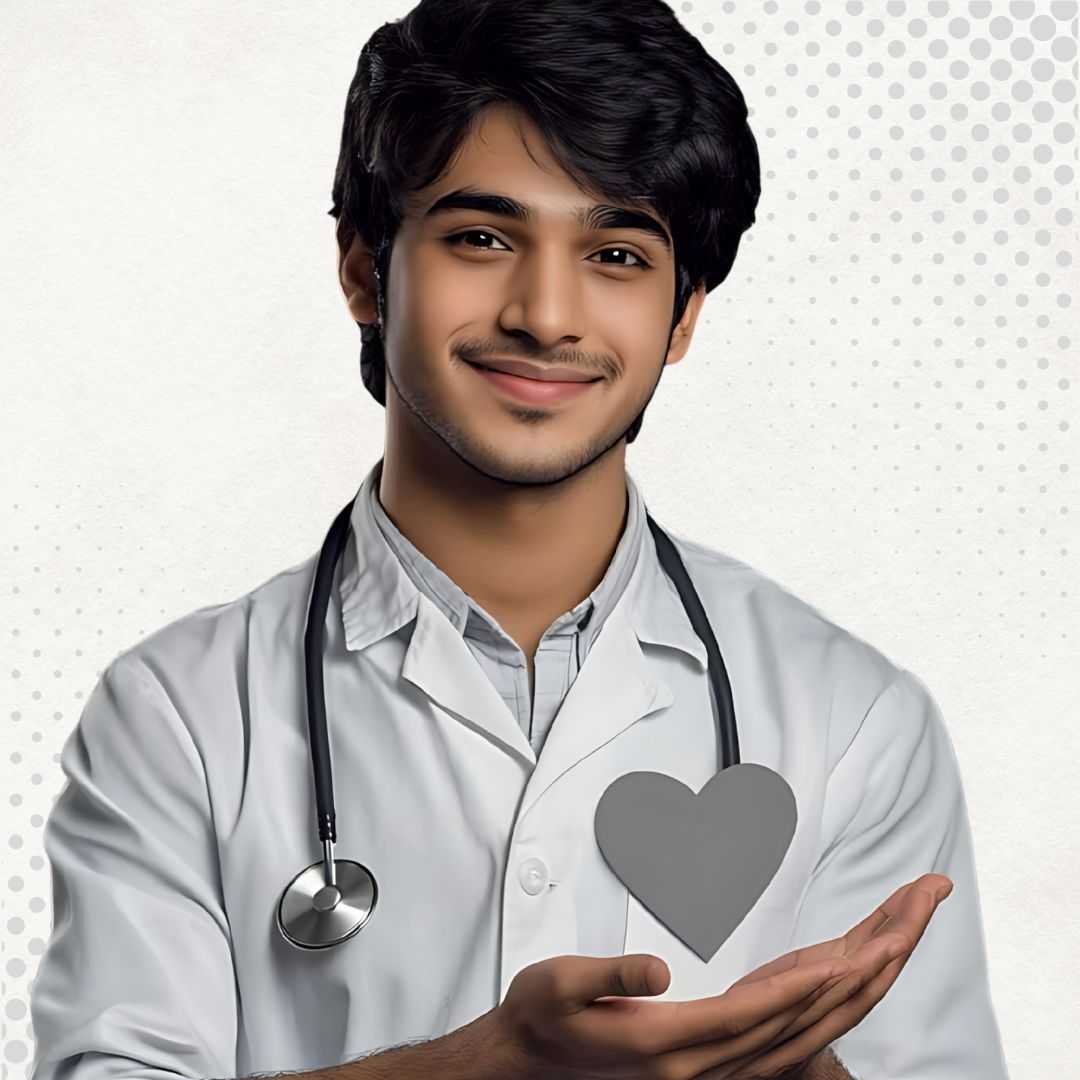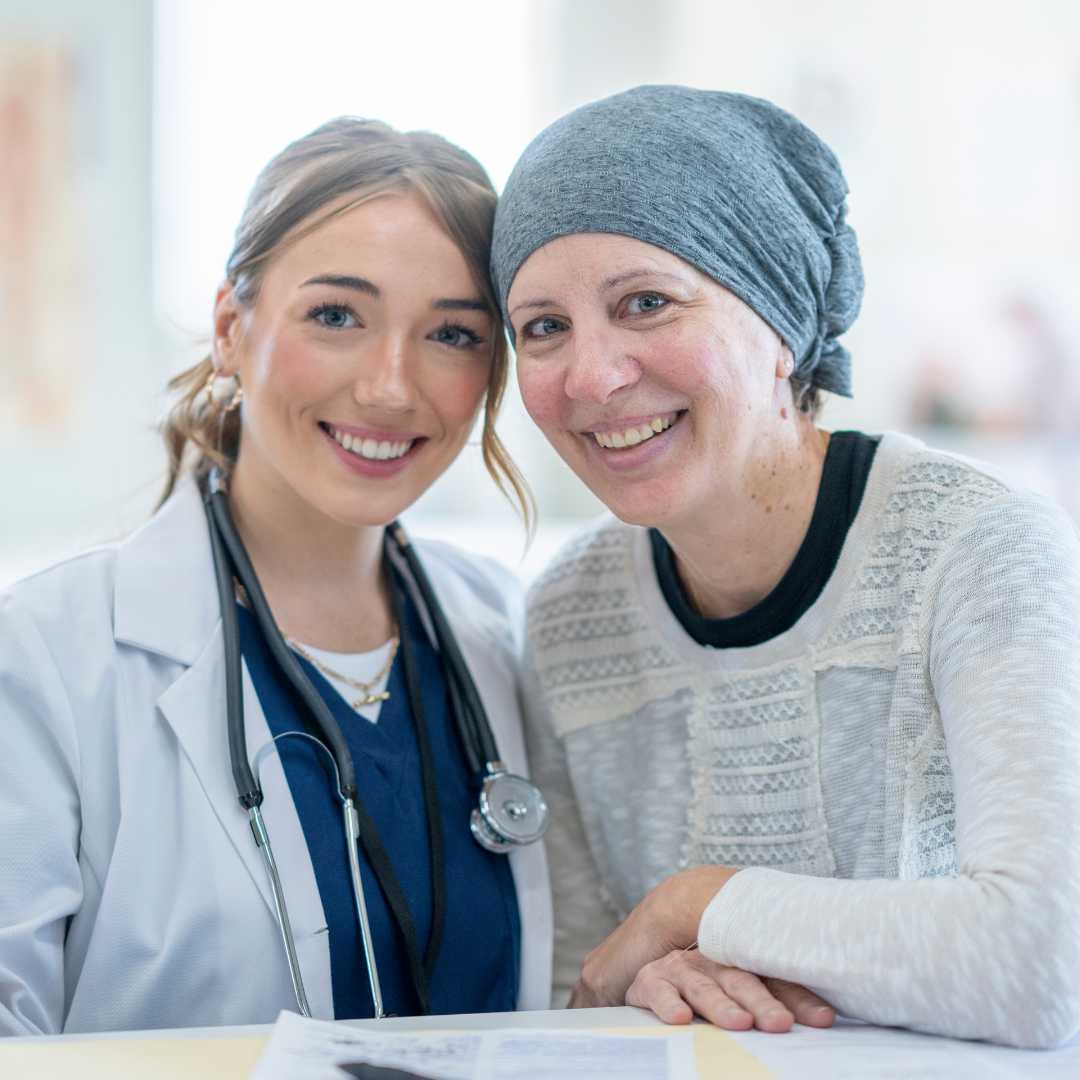
Navigating B-ALL Treatment: Hope and Healing Abroad for Acute Lymphoblastic Leukemia
Receiving a diagnosis of Acute Lymphoblastic Leukemia (B-ALL) can be overwhelming. This aggressive form of blood cancer, particularly B-cell ALL, progresses rapidly and requires immediate, intensive treatment. It's a journey filled with uncertainty, but also with incredible advancements in medical science offering real hope for remission and cure. For many, the question "what is B-ALL treatment?" quickly evolves into "where can I get the best B-ALL treatment?" or "how much does leukemia treatment cost?"
B-ALL, also known as Acute Lymphocytic Leukemia, impacts the body's ability to produce healthy white blood cells, which are crucial for fighting infection. Instead, the bone marrow produces too many immature lymphocytes (lymphoblasts) that can't function properly. This leads to common symptoms like persistent fatigue, frequent infections, and easy bruising, which often prompt initial medical visits. When facing such a critical condition, exploring all available avenues, including international treatment options, becomes a vital consideration for many patients and their families seeking the best possible care and outcomes.
What are the common symptoms of B-ALL?
The symptoms of B-ALL often develop quickly, resembling those of a severe infection or a general feeling of being unwell. Because the leukemia cells crowd out healthy blood cells in the bone marrow, the signs reflect deficiencies in red blood cells (anemia), white blood cells (immune suppression), and platelets (clotting problems). Patients often search for "leukemia symptoms in adults" or "signs of ALL."
- Persistent Fatigue and Weakness: Feeling unusually tired, even after rest, is a hallmark. It's like your body's energy battery is constantly drained due to anemia.
- Frequent or Severe Infections: Despite an increase in white blood cells, they are immature and dysfunctional, leaving the body vulnerable to illness, leading to recurrent fevers and infections.
- Easy Bruising or Bleeding: A shortage of healthy platelets can cause unexplained bruises, nosebleeds, bleeding gums, or tiny red spots on the skin (petechiae).
- Bone or Joint Pain: The buildup of leukemia cells in the bone marrow can cause pain, especially in larger bones or joints, often leading patients to ask "why do my bones hurt?".
- Swollen Lymph Nodes: Enlarged lymph nodes (often painless) in the neck, armpits, or groin are common, as are swollen glands.
- Swollen Abdomen: An enlarged liver or spleen due to leukemia cell accumulation can lead to abdominal fullness or discomfort.
- Loss of Appetite and Weight Loss: General malaise and the body's struggle can lead to a lack of interest in food and unintentional weight loss.
If you experience any of these symptoms, especially if they are sudden or persistent, it's crucial to seek medical attention immediately. Early diagnosis significantly improves B-ALL treatment outcomes.
What causes B-ALL and what are its risk factors?
Unlike many cancers, B-ALL is generally not inherited and most cases have no clear cause. It begins with an acquired (not inherited) error in the DNA of a single early-stage white blood cell in the bone marrow. This genetic mutation causes the cell to grow and divide uncontrollably, forming abnormal white blood cells called lymphoblasts. These lymphoblasts fail to mature, accumulate in the bone marrow, and spill into the bloodstream, interfering with the production of healthy blood cells. People often search "what causes ALL?" or "is B-ALL hereditary?".
While the exact trigger for these mutations is often unknown, several factors have been identified as increasing the risk:
- Genetic Syndromes: Certain inherited conditions, such as Down syndrome, Fanconi anemia, Bloom syndrome, and Ataxia-telangiectasia, are associated with a higher risk of B-ALL.
- Previous Cancer Treatment: Patients who have undergone chemotherapy or radiation therapy for other cancers may have a slightly increased risk of developing secondary leukemia.
- Exposure to Radiation: High-dose radiation exposure, such as from atomic bomb survivors or accidental exposure, increases the risk.
- Exposure to Certain Chemicals: Prolonged exposure to chemicals like benzene and some pesticides has been linked to an increased risk, though the evidence is stronger for other types of leukemia.
- Sibling with ALL: While not directly hereditary, having an identical twin or a close sibling who had ALL, especially at a young age, slightly increases risk.
It's important to remember that most people with these risk factors never develop B-ALL, and many people with B-ALL have no known risk factors. Research continues to unravel the complex genetic and environmental interactions that contribute to the development of this disease.
What are the primary treatment options for B-ALL?
B-ALL treatment is highly intensive and typically lasts for several years. The goal is to achieve complete remission and ultimately, a cure. The approach is multi-phased and tailored to the individual, considering factors like age, specific genetic markers of the leukemia cells, and overall health. Patients often ask "how is B-ALL treated?" or "is B-ALL chemotherapy?".
- Chemotherapy: This is the cornerstone of B-ALL treatment and involves several phases:
- Induction: The initial, most intensive phase aimed at killing as many leukemia cells as possible and achieving remission. This often involves a combination of powerful chemotherapy drugs.
- Consolidation/Intensification: Once remission is achieved, this phase uses additional chemotherapy to kill any remaining leukemia cells that might cause a relapse.
- Maintenance: A longer, less intensive phase (lasting 2-3 years) with daily oral chemotherapy and occasional IV doses to prevent the leukemia from returning.
- Central Nervous System (CNS) Prophylaxis: Since B-ALL can spread to the brain and spinal cord, chemotherapy drugs are often injected directly into the cerebrospinal fluid (intrathecal chemotherapy) to prevent or treat this.
- Targeted Therapy: These drugs specifically target certain vulnerabilities in cancer cells while sparing healthy cells. Examples include tyrosine kinase inhibitors for ALL with the Philadelphia chromosome.
- Immunotherapy: This uses the body's own immune system to fight cancer.
- CAR T-cell Therapy: A revolutionary treatment where a patient's T-cells are genetically modified in a lab to recognize and attack leukemia cells, then infused back into the patient. Often used for relapsed or refractory B-ALL.
- Monoclonal Antibodies: Drugs like Blinatumomab and Inotuzumab Ozogamicin can specifically bind to proteins on leukemia cells, marking them for destruction by the immune system or delivering a toxic payload.
- Stem Cell Transplant (Bone Marrow Transplant - BMT): For high-risk B-ALL, or if the leukemia relapses, an allogeneic stem cell transplant may be recommended. This involves high-dose chemotherapy and/or radiation to destroy diseased bone marrow, followed by infusion of healthy blood-forming stem cells from a donor. This is a very intensive procedure with significant risks but offers the chance of a cure.
The choice of treatment depends on many factors, and a multidisciplinary team of oncologists will develop the most appropriate plan for each patient.
Who is eligible for B-ALL treatment and what factors determine it?
Eligibility for specific B-ALL treatments, especially advanced ones like CAR T-cell therapy or stem cell transplants, is determined by a comprehensive evaluation. It's not a one-size-fits-all scenario, and doctors consider several critical factors to ensure the chosen treatment offers the best chance of success while minimizing risks. Patients often search "B-ALL treatment options for adults" or "who can get CAR T-cell therapy for ALL?".
- Age: Children with B-ALL generally have better prognoses and can tolerate more intensive chemotherapy regimens. Adult B-ALL is often more aggressive and may require different protocols or more aggressive approaches like stem cell transplant earlier in the treatment course.
- Overall Health and Performance Status: Patients must be well enough to withstand intensive treatment. This includes assessing kidney, liver, heart, and lung function. Those with significant co-morbidities might not be eligible for the most aggressive therapies due to increased risks.
- Specific Subtype of B-ALL and Genetic Markers: B-ALL is not a single disease. Genetic testing of the leukemia cells reveals specific mutations (e.g., Philadelphia chromosome, MLL gene rearrangements). These markers are crucial for risk stratification and determining which targeted therapies or immunotherapies might be effective.
- Disease Stage and Extent: Whether the leukemia has spread to the central nervous system (CNS) or other organs influences treatment intensity and strategy.
- Response to Initial Treatment: For patients with relapsed or refractory B-ALL, eligibility for subsequent treatments like CAR T-cell therapy or a second transplant depends on their prior treatment history and how their disease responded.
- Availability of a Suitable Donor: For allogeneic stem cell transplants, a matched donor (sibling, unrelated, or cord blood) is essential.
A thorough diagnostic workup, including bone marrow biopsies, cytogenetic testing, and molecular studies, is essential to determine eligibility and tailor a precise treatment plan.
What is the expected recovery time and what can I expect after B-ALL treatment?
The journey through B-ALL treatment is arduous, and recovery is a marathon, not a sprint. Patients and their families often wonder "how long does B-ALL treatment last?" and "what happens after leukemia treatment?". While remission is a significant milestone, the process of healing and regaining strength continues for months or even years. Recovery involves managing physical side effects, emotional well-being, and adjusting to a new normal.
- Acute Recovery (Weeks to Months):
- Immediate Post-Treatment: After intensive chemotherapy phases or a stem cell transplant, patients face severe immune suppression, fatigue, nausea, and other acute side effects. Hospital stays can be prolonged, sometimes lasting several weeks or months, especially after a transplant.
- Rehabilitation: Physical therapy, occupational therapy, and nutritional support are often crucial to regain strength, manage fatigue, and improve overall physical function.
- Long-Term Recovery (Months to Years):
- Fatigue: Chronic fatigue is a very common and persistent side effect, often lasting for months or even years after treatment completion.
- Neurological Effects: Some patients may experience "chemo brain" (difficulties with concentration and memory) or peripheral neuropathy.
- Organ Damage: Chemotherapy can sometimes cause long-term damage to the heart, lungs, kidneys, or other organs, requiring ongoing monitoring.
- Emotional and Psychological Impact: Dealing with a life-threatening illness, intense treatment, and the fear of relapse can lead to anxiety, depression, or post-traumatic stress. Psychological support, counseling, and support groups are invaluable.
- Infertility: Many B-ALL treatments can affect fertility, an important consideration for younger patients.
- Secondary Cancers: A small risk of developing a secondary cancer years after treatment exists.
- Monitoring and Follow-up: Regular follow-up appointments, blood tests, and sometimes bone marrow biopsies are essential for years to monitor for relapse and manage long-term side effects. Maintenance chemotherapy also extends for a considerable period.
Each patient's recovery journey is unique, influenced by their age, treatment intensity, and individual response. A strong support system and a proactive approach to managing side effects are key to a successful recovery.
What are the risks and side effects of B-ALL treatment?
B-ALL treatments are designed to be aggressive to eradicate cancer cells, but this intensity comes with significant side effects and risks. These can range from mild discomforts to life-threatening complications. Understanding them is crucial for patients and caregivers as they navigate the treatment journey. Patients often ask "B-ALL treatment side effects" or "is B-ALL treatment painful?".
- Bone Marrow Suppression: This is the most common and serious side effect of chemotherapy, leading to:
- Anemia: Low red blood cell count, causing fatigue, weakness, and shortness of breath.
- Thrombocytopenia: Low platelet count, increasing the risk of bleeding and bruising.
- Neutropenia: Low white blood cell count (specifically neutrophils), severely compromising the immune system and leading to a high risk of life-threatening infections. Fevers during neutropenia are medical emergencies.
- Gastrointestinal Issues: Nausea, vomiting, diarrhea, constipation, mouth sores (mucositis), and loss of appetite are very common.
- Hair Loss: Most chemotherapy regimens for B-ALL cause hair loss.
- Fatigue: Profound and persistent fatigue is almost universal.
- Organ Damage: Some chemotherapy drugs can cause temporary or permanent damage to the heart, kidneys, liver, lungs, or nervous system. Regular monitoring is essential.
- Neuropathy: Nerve damage, leading to numbness, tingling, or pain in the hands and feet.
- Infertility: Many treatments can impair fertility, which is an important discussion point for young patients.
- Secondary Cancers: A small but real risk of developing another type of cancer years later.
- Stem Cell Transplant Specific Risks (for BMT):
- Graft-versus-Host Disease (GVHD): The donor's immune cells attack the recipient's healthy tissues, ranging from mild to severe, and potentially life-threatening.
- Graft Failure: The transplanted stem cells do not engraft or fail to produce blood cells.
- Relapse: Despite the transplant, the leukemia can return.
- CAR T-cell Therapy Specific Risks:
- Cytokine Release Syndrome (CRS): A severe systemic inflammatory response, causing fever, low blood pressure, difficulty breathing, and organ dysfunction.
- Neurological Toxicities: Confusion, seizures, speech difficulties, or swelling in the brain.
While these risks are serious, medical teams are highly skilled in managing side effects to ensure patient safety and comfort throughout the intensive treatment process.
How do B-ALL treatment costs compare worldwide?
The cost of B-ALL treatment is a major concern for many patients, especially those without adequate health insurance. In developed Western countries, the comprehensive treatment—including multiple phases of chemotherapy, targeted therapies, immunotherapy, and potentially a stem cell transplant—can run into hundreds of thousands, if not millions, of dollars. This financial burden often leads patients to search for "leukemia treatment cost" or "B-ALL treatment cost abroad." Medical tourism offers a viable alternative, providing high-quality care at a fraction of the price.
| Treatment Component | USA (USD) | Germany (EUR) | India (USD) | Turkey (USD) | Mexico (USD) | Thailand (USD) |
|---|---|---|---|---|---|---|
| Initial Chemotherapy (Induction & Consolidation) | $100,000 - $300,000+ | €80,000 - €200,000+ | $20,000 - $60,000+ | $25,000 - $70,000+ | $30,000 - $80,000+ | $25,000 - $75,000+ |
| Maintenance Chemotherapy (per year) | $50,000 - $150,000+ | €40,000 - €100,000+ | $10,000 - $30,000+ | $12,000 - $35,000+ | $15,000 - $40,000+ | $12,000 - $35,000+ |
| Allogeneic Stem Cell Transplant (BMT) | $300,000 - $800,000+ | €150,000 - €400,000+ | $50,000 - $100,000+ | $60,000 - $120,000+ | $70,000 - $150,000+ | $65,000 - $130,000+ |
| CAR T-cell Therapy | $375,000 - $500,000+ (drug cost only, excluding hospitalization) | €300,000 - €450,000+ | $100,000 - $200,000+ (limited availability) | $120,000 - $250,000+ (emerging) | N/A or very limited | N/A or very limited |
| Estimated Total (Full Course including BMT) | $500,000 - $1,000,000+ | €300,000 - €700,000+ | $80,000 - $200,000+ | $100,000 - $250,000+ | $120,000 - $300,000+ | $100,000 - $250,000+ |
*Note: These figures are estimates and can vary significantly based on the specific hospital, doctor's fees, duration of stay, complications, specific drug protocols, and country-specific pricing models. They generally do not include travel, accommodation, or extensive post-treatment follow-up if performed back home.
Why should I consider B-ALL treatment abroad?
For a severe condition like B-ALL, exploring international options can open doors to new possibilities. The decision to seek "B-ALL treatment abroad" is often driven by a combination of factors:
- Significant Cost Savings: As seen in the cost comparison, medical procedures and treatments in many countries are considerably more affordable than in Western nations, often saving patients 50-70% or more, even when factoring in travel and accommodation.
- Access to Advanced Therapies: Some cutting-edge treatments, like specific types of CAR T-cell therapy or clinical trials, might be more readily available or approved in certain countries before they are widespread elsewhere.
- Reduced Wait Times: In countries with universal healthcare or high demand, wait lists for specialized procedures can be long. Traveling abroad can provide immediate access to critical treatment.
- Expertise and Specialized Centers: Many international hospitals boast world-renowned specialists and state-of-the-art facilities dedicated to hematological oncology, offering equivalent or even superior levels of care.
- Privacy and Anonymity: For some, seeking treatment abroad offers a level of privacy not available in their home country.
- Personalized Care: In certain medical tourism destinations, patients report a more personalized and attentive care experience due to different healthcare models.
For complex and long-term treatments like B-ALL, the potential for substantial savings combined with access to high-quality care makes medical tourism a compelling option.
Which countries offer the best value for B-ALL treatment for international patients?
When searching for "best countries for ALL treatment," several nations consistently emerge as top choices for medical tourism, balancing quality, expertise, and affordability:
- India: Renowned for its highly skilled doctors, state-of-the-art hospitals (many with JCI accreditation), and significantly lower costs across all B-ALL treatment modalities, including complex stem cell transplants and emerging CAR T-cell therapies.
- Turkey: An increasingly popular destination with modern hospitals, experienced oncologists, and competitive pricing, especially for chemotherapy and stem cell transplants. They often offer comprehensive packages.
- Mexico: Convenient for North American patients, Mexico offers advanced medical facilities, particularly in cities like Monterrey and Guadalajara, with significant cost savings for various cancer treatments.
- Thailand: Known for its luxurious hospitals, excellent patient care, and English-speaking staff, Thailand provides high-quality B-ALL treatment options at attractive prices.
- Germany: For those seeking advanced European medical standards, Germany offers highly specialized oncology centers, cutting-edge research, and top-tier B-ALL treatment, often at a higher cost than Asian or Latin American options but still potentially lower than the USA.
- South Korea: A leader in medical technology and research, South Korea has excellent hospitals, particularly for stem cell transplants and advanced therapies, offering high-quality care with competitive pricing.
These countries have invested heavily in their healthcare infrastructure, attracting international patients by offering a blend of world-class medical expertise and cost-effectiveness.
What should I expect when traveling for B-ALL treatment and how can I ensure safety and quality abroad?
Embarking on international medical travel for B-ALL treatment requires careful planning and due diligence. It's a significant undertaking, but with the right preparation, it can be a smooth and successful experience.
What to Expect When Traveling:
- Extensive Planning: This includes securing visas, arranging flights, booking accommodation (often for an extended stay), and coordinating local transportation. Many hospitals offer international patient services to assist with these logistics.
- Medical Records: You'll need to compile and translate all your medical records, including diagnostic reports, treatment history, and current medications, for the international medical team.
- Language Barriers: While many top medical tourism hospitals have English-speaking staff, having a translator or language support can be beneficial for deeper conversations or outside the hospital.
- Cultural Differences: Be prepared for cultural differences in healthcare practices, communication styles, and daily life.
- Support System: It's highly recommended to travel with a companion, especially given the intensity of B-ALL treatment and potential side effects.
How to Ensure Safety and Quality:
- Accreditation: Look for hospitals accredited by international bodies like the Joint Commission International (JCI). JCI accreditation signifies that a hospital meets stringent global standards for patient safety and quality of care.
- Doctor's Credentials and Experience: Verify the qualifications, board certifications, and experience of the oncologists and hematologists. Research their specialization in leukemia and BMT.
- Hospital Reputation: Research the hospital's reputation specifically in hematology/oncology. Look for patient reviews, testimonials, and success rates for B-ALL.
- Technology and Facilities: Ensure the facility has state-of-the-art equipment for diagnostics (e.g., flow cytometry, molecular genetics), treatment delivery (e.g., advanced chemotherapy units, radiation oncology), and specialized units for stem cell transplants and CAR T-cell therapy.
- Comprehensive Care Teams: A quality institution will have a multidisciplinary team including oncologists, hematologists, transplant specialists, nurses, dietitians, social workers, and psychologists.
- Transparency in Pricing: Obtain detailed, written quotes that cover all aspects of treatment, including hospital stay, doctor fees, medications, and potential complications.
- Medical Tourism Facilitators: Companies like PlacidWay specialize in connecting patients with vetted international hospitals and clinics. They can help with treatment plans, cost estimates, travel logistics, and ensuring quality, acting as a trusted intermediary.
By taking these steps, you can significantly enhance your safety and the quality of care received abroad, giving you peace of mind during a challenging time.
What are patient success stories from abroad?
While specific patient names and detailed medical histories are confidential, the landscape of medical tourism is rich with anecdotal evidence and aggregated reports of successful B-ALL treatments. These stories often provide immense hope and validation for others considering similar paths. Patients often share their experiences on forums, blogs, or through testimonials facilitated by medical tourism providers.
- Cost-Effective Remission: A common theme is patients from Western countries who, facing astronomical treatment costs at home, traveled to places like India or Turkey and successfully achieved B-ALL remission for a fraction of the price. They often highlight the modern facilities and the expertise of the medical staff being on par with, or even exceeding, what they could access domestically.
- Access to Novel Therapies: Some patients have found access to specific targeted therapies or even early-phase CAR T-cell therapies in countries where these treatments were approved earlier or offered through clinical trials before becoming widely available in their home countries. For example, a patient from a developing nation might access an allogeneic stem cell transplant in a leading German or South Korean hospital that wasn't an option domestically.
- Personalized and Compassionate Care: Many testimonials emphasize the human element—doctors and nurses who provided not just medical care but also emotional support, clear communication, and a highly personalized approach, which was particularly comforting during such a stressful time. Families often commend the comprehensive support, from airport pickup to follow-up care coordination.
- Overcoming Financial Barriers: Stories abound of individuals whose lives were saved because medical tourism made treatment financially feasible. Without the international option, they might have faced unbearable debt or foregone treatment altogether. These narratives powerfully illustrate the role of global healthcare in democratizing access to life-saving interventions.
These collective stories underscore that high-quality, effective B-ALL treatment is not exclusive to a few high-cost regions. By exploring options abroad, patients can find renewed hope and a path to recovery that aligns with their medical needs and financial realities. PlacidWay has been instrumental in connecting numerous patients with these life-changing opportunities, facilitating their journey to recovery.
Take the Next Step with PlacidWay
Ready to explore treatment options abroad? Discover top clinics, compare prices, and get a free quote tailored to your needs with PlacidWay.
CAR-T Cell Therapy | Chimeric Antigen Receptor T-Cell





.png)
.png)



Share this listing